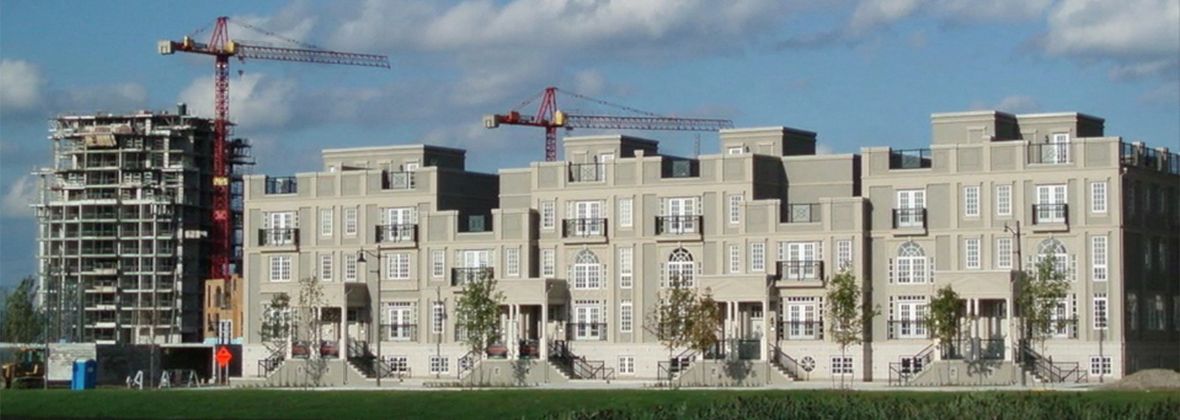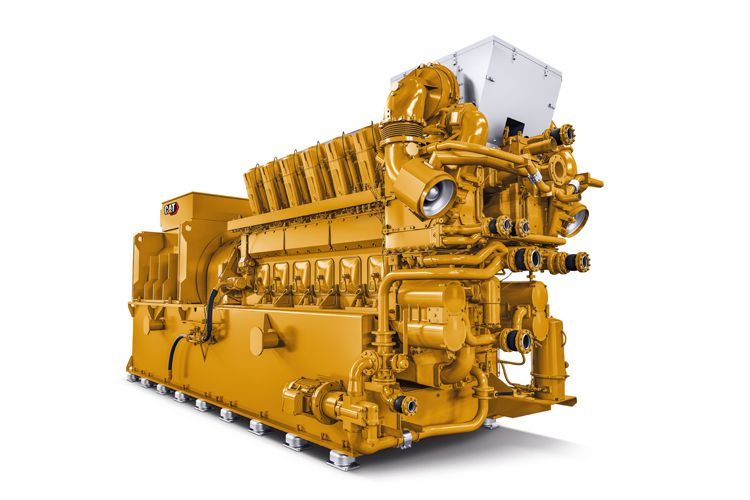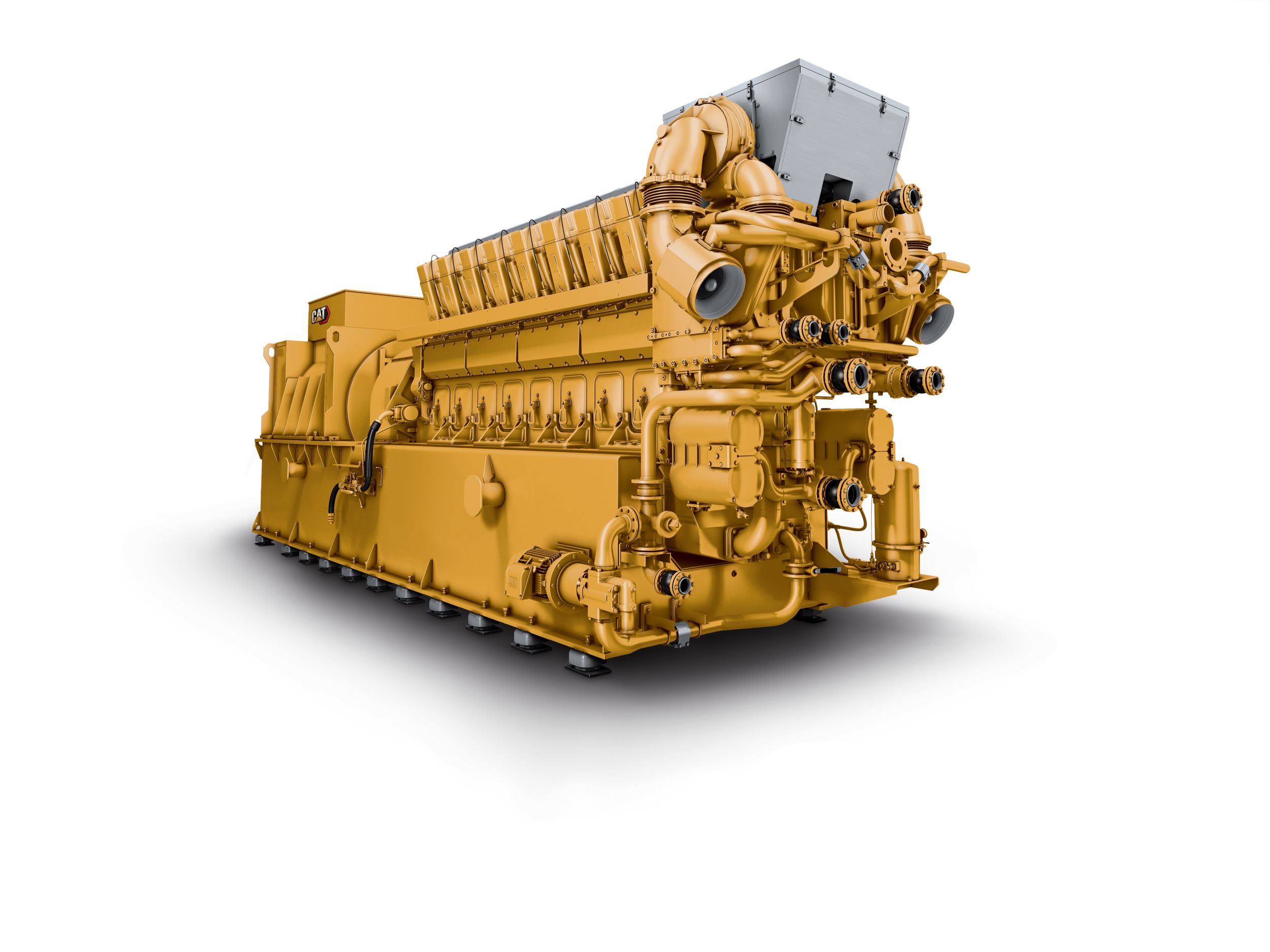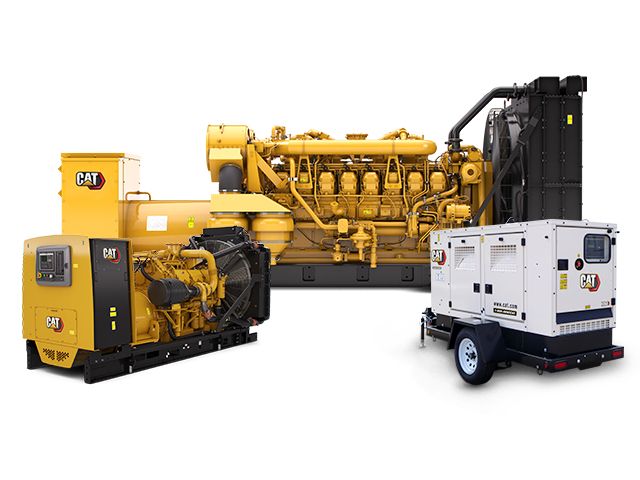If you already have an existing account with another Cat App, you can use the same account to sign in here.
One Account. All of Cat.
Your Caterpillar account is the single account you use to log in to select services and applications we offer. Shop for parts and machines online, manage your fleet, go mobile, and more.
Account Information
Site Settings
Security
Cat® gensets provide reliable emergency power
Customer: Markham District Energy
Location: City of Markham, Ontario, Canada
Customer Business Issue: District energy heating and cooling
Solution:
- One Cat® 3000 kW CG260-12 gas generator set
- One Cat 4000 kW CG260-16 gas generator set
- Two Cat 2500 kW 3516C kW diesel generator sets
Cat® Dealer: Toromont Cat Power Systems




Power Need
With close to 900 high-technology and life sciences companies located within its borders, Markham, Ontario, is arguably the fastest growing city in Canada based on its current population of 310,000 that is expected to grow to 450,000 within 15 years.
The urban satellite community located just north of Toronto has embarked on a plan for growth that emphasizes density over sprawl, and utilizes district energy. District Energy Systems – neighborhoodscale utilities that deliver heating and cooling – are re-emerging as a key strategy for cities that are pursuing aggressive environmental goals. As a leader in urban planning, Markham is a prime example of a community and its district energy system that are planned in concert. In Canada, a number of cities and towns have operated district energy systems for many decades. The oldest system in London, Ontario, dates back to 1880. In Ontario, district energy systems are located in many communities including Toronto, Ottawa, London, Hamilton, Sudbury, Cornwall and Windsor.
An infamous ice storm that hit Eastern Canada in 1998, along with the deregulation of the power industry, were critical factors in Markham’s decision to create a local energy system and become more self-reliant.
“It was an opportunity to think differently about how we build our buildings and deliver energy,” says Bruce Ander, president and CEO of Markham District Energy (MDE).
With a community thermal energy network, the local utility can connect distributed electric generator plants that generate a significant portion of the hot water or steam to that network while simultaneously generating electricity for the local electricity grid. This is known as cogeneration or combined heat and power (CHP), which is a highly efficient and socially responsible way of meeting a community’s energy needs.
Solution
To dramatically increase efficiency and reduce emissions, MDE deployed an aggressive distributed generation CHP strategy using reciprocating generator sets and heat recovery technology. In 2007, MDE hired Toromont Power Systems, their local Cat® dealer, as a turnkey provider to deliver not just generator sets, but to design and commission a CHP plant at Markham Centre as part of a bid process with the government for new generating capacity. This 5.0 MW CHP plant sited at the Warden Energy Centre was commissioned in 2008.
The Markham Centre Plan established a framework for creating Markham’s new downtown, accommodating future growth and focusing on environmental sustainability. When it is complete, Markham Centre will be a development of 30 million square feet including residential, commercial and institutional buildings, and home to over 41,000 residents and 39,000 employees.
“MDE needed a partner that could bid and guarantee capital and operating costs for a new CHP facility, not just provide generator set and component pricing,” Ander says. “Toromont offered that turn-key capability, which formed the basis of a bidding partnership.”
“It’s a very important benefit, that they can make significant contributions to the design and engineering,” Ander adds. “While there are many world-class engines, the key to us is the service support that goes through Toromont all the way up to the factory. The reliability of parts and service support, combined with the expertise and technical knowledge were the keys in differentiating Toromont and Caterpillar.”
MDE’s primary fuel source is natural gas, with large, efficient boiler plants that supplement the hot water from the CHP generators, and distribute through underground networks alongside the chilled water that comes from electric centrifugal chillers. The entire system represents economy of scale.
“Electricity is a by-product of what we do,” Ander says. “Thermal is first. We produce power as a means of producing useful heat for the community thermal grid.”
MDE commissioned its second district energy system in 2012 to service Cornell Centre, a rapidly growing urban centre with the expanding Markham Stouffville Hospital as an anchor energy customer. When complete, the Cornell Centre development will consist of over 10 million square feet of residential, commercial and institutional buildings.
In late 2012, Toromont commissioned a Cat CG260-12 natural gas generator set for MDE Birchmount Energy Centre, a Cat CG260-16 for the Bur Oak Energy Centre, along with ancillary electrical and mechanical equipment for both sites. The CG260 Series generator sets provide a combined 7 MW of electricity and 7 MW of thermal energy to the Markham District Energy system. Two of the main reasons Toromont won the contract for the CG260 generators are its service group and the proximity to MDE’s operations, according to Ander.
Results
MDE now operates over 21 MW of Cat-powered generating capacity at three locations that provide reliable and efficient power and heating to its customers. “We have successfully operated Cat power generation equipment for over a decade now, and Toromont has been an excellent partner since our project was first commissioned,” Ander observes.
Altogether, MDE utilizes nine Cat generator sets, including two 3516C diesel units that provide emergency power to the hospital as well as some of Markham’s major business customers. “This is part of our emergency preparedness plan, having onsite power with both diesel and gas,” Ander comments. “Having those generators reliable and ready to run is important.
“Here at MDE, many of us have come from the supplier side,” Ander says. “We understand the role of the distributor and the service group, because projects succeed and fail on the operations side. We really have a firm understanding of where Toromont plays and what they bring to the table.”
Ander says CHP systems in Europe use other fuels such as biogas to replace or supplement natural gas. While Markham isn’t doing it yet, one plan is to transition to biomass using clean wood waste as a fuel source.
“We have some very good examples, like St. Paul (Minnesota), which converted to wood (from natural gas and coal) to heat their downtown,” Ander says. “Within 10 years, we may have the Cat natural gas generators work in conjunction with biomass or biogas boilers. We will not be dependent on just natural gas.
“First and foremost, our core business is to create thermal energy,” Ander reiterates. “And, reliability is our first priority. Whether the Cat fleet is providing emergency power to our customers, or grid power, or thermal energy for our heating system, high reliability is the goal for MDE and our suppliers.”
Featured products
-
- Continuous Rating
- 3333 / 3000 ekW @1.0pf
- 3333 / 3000 ekW @1.0pf
- Fuel Type
- Natural Gas, Coal Gas, Hydrogen Blend (up to 25%)
- Natural Gas, Coal Gas, Hydrogen Blend (up to 25%)
- Maximum Electrical Efficiency
- 43.90%
- 43.90%
CG260-12
From natural gas-fueled combined heat and power (CHP) systems and emergency power for facilities, to renewable biogas energy to support the local grid, or electricity generated from coal mine gases, Caterpillar has a wide range of reliable gas power solutions.
Learn More- Continuous Rating
- 4500 / 4050 ekW @1.0pf
- 4500 / 4050 ekW @1.0pf
- Fuel Type
- Natural Gas, Hydrogen Blend (up to 25%)
- Natural Gas, Hydrogen Blend (up to 25%)
- Maximum Electrical Efficiency
- 44.60 / 44.3%
- 44.60 / 44.3%
CG260-16
From natural gas-fueled combined heat and power (CHP) systems and emergency power for facilities, to renewable biogas energy to support the local grid, or electricity generated from coal mine gases, Caterpillar has a wide range of reliable gas power solutions.
Learn More











